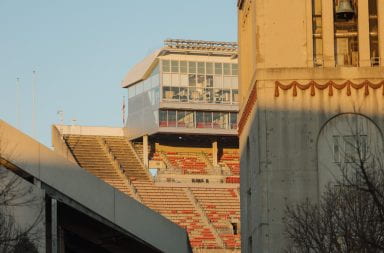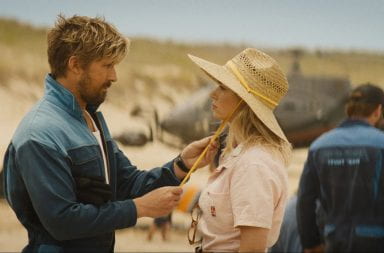For the past few days I have had the opportunity to use a camera that represents what I believe is an ultimately useless leap forward in camera technology.
In simple terms, the Lytro light field camera, unveiled in October, takes pictures that record the entire field of light rays. The entire 11 million light rays that the camera can capture are then recorded rather than just recording the light and colors that hit a sensor, as a regular digital camera does.
This means that because the whole field of view is captured, the focus in the picture can be manipulated after the picture is taken.
This ability to change the focus after the picture has been taken is Lytro’s main selling point, and I have to admit, it is a pretty nifty feature. The photographer no longer has to worry about focus and can instead concentrate on getting a clean and cool frame.
However, I don’t believe this is enough to convince someone that the camera is worth $400.
Being able to take a “living picture,” as Lytro describes it, is the only cool feature about the camera. There is no sports mode, no night exposure mode, only the normal mode and a “creative mode.” Even then, though, the “creative mode” just lets you have finer control over where the camera refocuses, which is the entire point of the camera anyway.
Lytro’s support website even admits that their ideal client would be “not so concerned with things like interchangeable lenses, large format printing and tweaking manual camera settings.”
While they are fine for sharing on Facebook where any of your friends can play with the focus in the picture, the output size leaves something to be desired.
Though they don’t list an exact pixel output, Lytro says the photos are “11 megarays.”
If you are now wondering how many megapixels are in “11 megarays,” there is no great answer for that. Embedded in all of the pictures is the light ray data so megapixels and megarays don’t equate.
However, you can export your “living picture” looks to a .jpeg file, which can be measured in pixels. And that photo, if printed at the most common printing resolution of 300 dpi, would only be 3.6 inches by 3.6 inches.
But Lytro seems to enjoy needlessly reinventing photography, because they even reinvented the form factor of the camera.
The camera is like a square stick, measuring just more than 4 inches long, with each side being more than 1.6 inches.
Squared sticks of that size do not easily fit into pockets. I am a guy, and I’ve seen the mystified look on girls’ faces when guys are able to fit phones, iPods, keys and wallets into just the two front pockets on a pair of jeans, so not being able to fit this camera comfortably should say something.
If the camera is already an inconvenient size for pockets and takes comparatively small photos, I would not mind having the light field camera be the size of a compact SLR. Lytro could use the extra space to accommodate more controls as well as upgraded sensors.
Not to mention all the creative issues with the camera. The whole point of the camera is to refocus the pictures later and enjoy the multiple planes of imagery, but getting a frame like that is not your everyday picture.
Most people buying cameras in the $400-$500 range are looking to take photos of friends or vacation memories. Those kinds of photos are flat where usually only one thing should be in focus. You do not need to be able to focus on the wallpaper of the house that your friends had a party at.
But if someone is buying a camera for its creative ability, then they should want something with more features than just the ability to refocus.
All things considered, the Lytro is cool, it never takes an out-of-focus picture and you can share those cool pictures with the world. But ultimately, I can’t help but feel that the camera is aimed at a niche that doesn’t quite exist.


